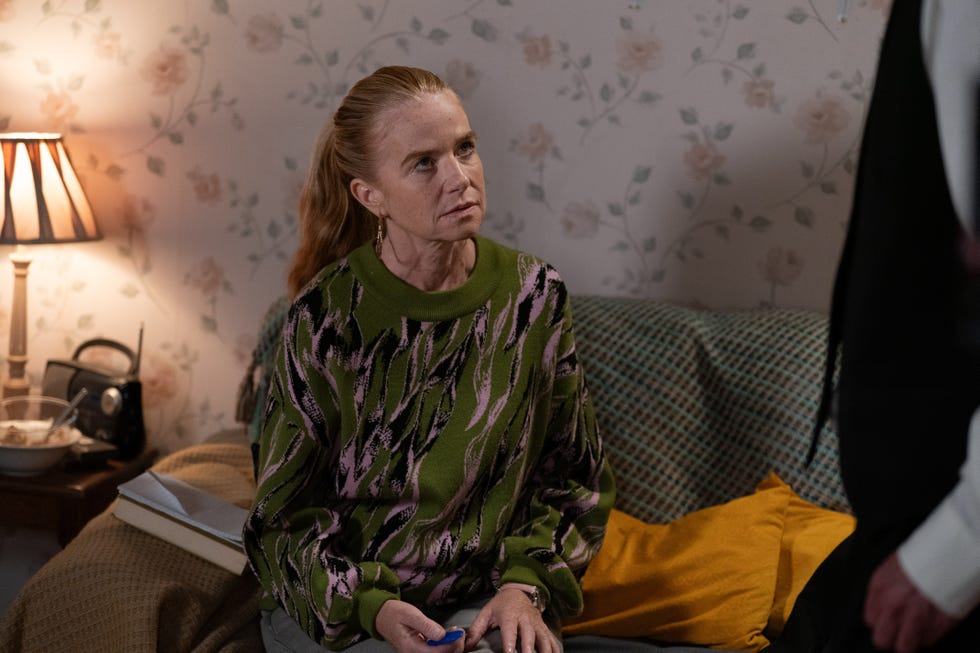I’ve fallen out of the loop with EastEnders lately, but news of a new
storyline for one of its legacy characters drew me back in.
Bianca Jackson learned via a doctor that traits causing her difficulty
in life – including hyperfocus on some things such as getting justice for her sister Sonia, and her struggle to focus on other things because her
brain “bounces around a lot” – could possibly be a sign of ADHD. This was a powerful moment for me as a late-diagnosed ADHD-er who’s very early on in their treatment and unmasking journey.
I was diagnosed with combined-type ADHD two days after my 39th birthday. So many women (and gender non-conforming folk like myself) weren’t diagnosed until much later in life. As ADDitude magazine notes,
that’s mostly due to historical and gendered misunderstandings about how ADHD traits present.

As a child, I masked the more outwardly hyperactive elements of my ADHD due to social conditioning about how my family, teachers and so on expected me to behave. Because I struggled even then with emotional regulation and rejection sensitivity, little five-year-old me decided to opt for a quiet life and to try and fit in.
The outward hyperactivity became internalised, and over time it became an accelerant for anxiety and depression. That, combined with a deep and unyielding interest in learning – which manifested in solid school grades – was how my neurodivergence flew under the radar for a further 34 years.
Advertisement – Continue Reading Below
Even those who are boxed into a particular personality type by those around them can go undiagnosed, too: in an interesting observation, Bianca attributed her behaviours to “being a redhead” during a conversation in the café with Freddie Slater.
Again, this shows how writing off certain behaviours as stereotypes of ‘loud’ or ‘difficult’ women can be equally damaging as the ‘daydreamer’ label I got growing up – which was in fact masking overwhelming waves of internal noise.

Additionally, the NHS (via NICE) only recognised that adults could even have ADHD in 2008, meaning the so-called ‘explosion’ in adult ADHD diagnoses, often hyperbolically referenced in media headlines, actually has a very logical reason behind it. If it is eventually confirmed that Bianca has ADHD, this could also explain why she has reached her late forties undiagnosed.
It’s not a trend or bandwagon and should not be dismissed as such – and if EastEnders follows up these early scenes and leads into an ADHD-assessment storyline for Bianca, I will be watching with interest and curiosity.
Freddie, who himself was diagnosed with ADHD last year, joined Bianca at her doctor’s appointment and has pledged to support her.
His conversation with Bianca at the café before that appointment also briefly highlighted some of Freddie’s own doubts and denial, when his former teacher Theo Hawthorne (prior to his villainous turn) suggested he may have the condition. It also briefly signalled how Freddie has started to process his diagnosis in the time since.
Freddie’s own storyline has often been powerful. But to me, his assessment and diagnosis, even with the help he got via Theo and his decision to go private for an assessment, felt unrealistically quick when compared to real life.
This content is imported from instagram. You may be able to find the same content in another format, or you may be able to find more information, at their web site.
Advertisement – Continue Reading Below
While it’s also very important to ensure that no character is solely defined by a medical condition – just as real people shouldn’t be – it would be nice to see Freddie’s own ADHD journey explored in further depth beyond his online spinoff with great-grandmother Mo. Maybe the friendship he’s now building with Bianca will allow us to see that a little more.
Bianca’s doctor also highlighted the brutal reality of how long it now takes to get an adult ADHD appointment via the NHS, saying she could be waiting “maybe years” – or alternatively, pay thousands of pounds for a private diagnosis.
In the real world outside of Soapland, some private providers’ waiting lists are now also under pressure, as the number of referrals proves greater than the speed at which assessments can take place.
In my area of London, the NHS waiting list for new adult ADHD assessments is currently two years long, as it was when I originally wrote to my GP to request an assessment referral in 2022.
I opted to pursue Right to Choose via the NHS, which meant I was assessed after an 18-month wait. This is where you can choose another provider or service outside your immediate area to undergo NHS treatment if you’ve been waiting for longer than the maximum waiting times.
However, there are some differences in access to Right to Choose based on where you are in the country, and not all GPs are necessarily aware of how it works. On top of that, there are vast inequalities around the country when it comes to getting an adult ADHD assessment.

There’s the obvious inequality of those with financial means being able to access a diagnosis faster than those who can’t afford to pay – but also, a major BBC News investigation published in July discovered that 24 NHS adult ADHD services around the UK would take at least eight years to clear their backlog of patients waiting for assessment.
The BBC also recently reported that ADHD-assessment waiting lists for children in Surrey are now over two years long. To describe this situation as a national emergency is no exaggeration.
Even after diagnosis, there’s more waiting for titration if you choose to try medication as a line of treatment, then more waiting if it’s not the right one, and more waiting if there’s a widespread medication shortage, such as those we went through in late 2023 and are going through again right now.
There’s waiting for ADHD-informed therapy, waiting for Access to Work application decisions… just a lot of waiting.

The irony of all this waiting hasn’t been lost on me as someone who isn’t the most patient person in the world.
Neither, however, is the danger when you have to wait years for diagnosis of a profoundly serious, life-altering condition that can meet the legal definition of disability, and can cause truly dire health outcomes and inequalities when undiagnosed or untreated.
We don’t know how long Patsy Palmer is back on the Square for as Bianca, and while showing her having to wait for an ADHD assessment might not be the most compelling television, it would at least be true to what so many around the country are unfairly going through right now.
Soaps can provide escapism, but they’re also an important window into reality. Stories involving health in particular take time, care and sensitivity.
EastEnders has already signalled some of the difficulties that those waiting for an ADHD assessment face (in ADHD Awareness Month, no less!), and now has an important opportunity to explore that further if it wishes to.

And through Freddie, I have seen a little of the joy of living with the condition – from the excitement of a new interest such as his love of birdwatching, to the solidarity he felt and showed in his initial conversation with Bianca at the café encouraging her to chat to her GP.
Living with ADHD is far more nuanced and complex than ‘superpower’ narratives (which, while they can empower, don’t feel especially powerful on the days when my neurodivergent burnout has been so bad that I literally struggle to get out of bed).
Then again, I’m fortunate enough to be able to embrace the joy that being an ADHD-er can bring, and will always have unshakable pride at how it informs the way I see the world. That has become ever more important to hold close on the worst days.
While EastEnders may not have yet decided what’s in store for Bianca following her appointment with the GP, I hope that wherever it takes her story and Freddie’s in the coming months, it will do so with authenticity.





